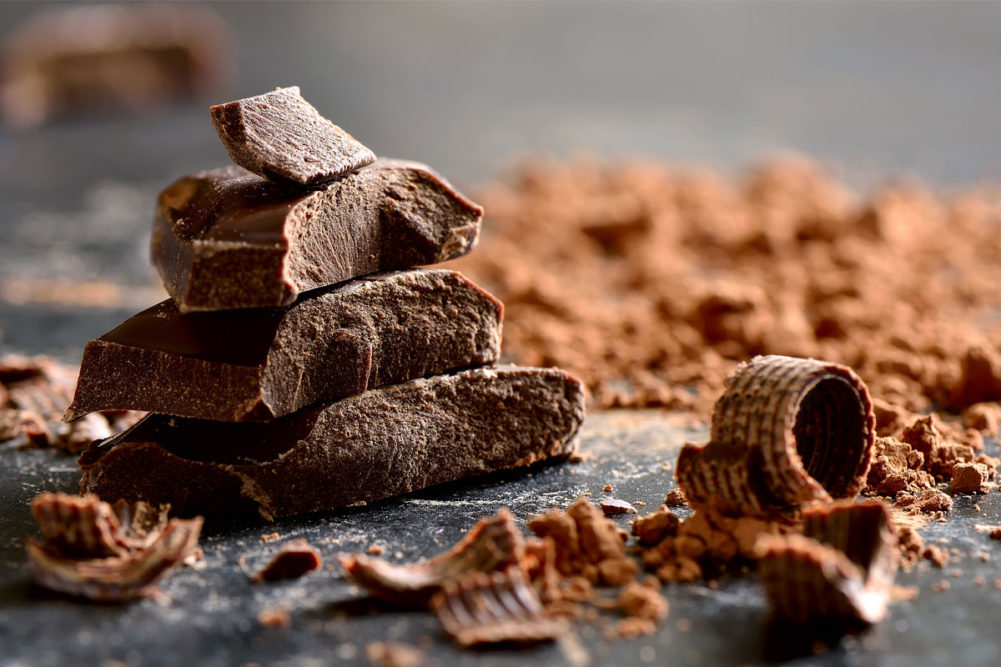WASHINGTON — The National Confectioners Association has defended the safety of dark chocolate after Consumer Reports brought attention to the amount of cadmium and lead in the products in a report issued Dec. 15.
Scientists for Consumer Reports measured the amount of lead and cadmium in 28 dark chocolate bars and determined how risky they were by using California’s maximum allowable dose levels for lead (0.5 micrograms) and cadmium (4.1 micrograms). There are no federal limits for the amount of lead and cadmium most foods may contain, according to Consumer Reports.
Five chocolate bars had relatively low levels of both lead and cadmium. Five more bars were lower in lead, and 10 other bars were lower in cadmium. Five bars were higher for both lead and cadmium.
The Washington-based National Confectioners Association, in its response, focused on the California dose levels.
"Chocolate and cocoa are safe to eat and can be enjoyed as treats as they have been for centuries,” the NCA said. “The California Office of Environmental Health Hazard Assessment (OEHHA) guidelines cited in the Consumer Reports study are not food safety standards. An expert investigation conducted through our prior California Proposition 65 settlement (with As You Sow) concluded that cadmium and lead are present in cocoa and chocolate due to soil and that bean cleaning during processing of cocoa beans reduces lead and cadmium in chocolate products.
“The products cited in this study are in compliance with strict quality and safety requirements, and the levels provided to us by Consumer Reports testing are well under the limits established by our settlement. Food safety and product quality remain our highest priorities, and we remain dedicated to being transparent and socially responsible."
Frequent exposure to lead may cause nervous system problems, hypertension, immune system suppression, kidney damage and reproductive issues, said Tunde Akinley, a chemist and food safety researcher for Consumer Reports who led the testing. Long-term exposure to heavy metals like cadmium also may lead to health problems, especially for pregnant women or young children because the metals may cause developmental problems, he said.
Consumer Reports recommended eating dark chocolate only occasionally.
“Having a serving a few days a week, especially with a product that has lower levels, means you can eat dark chocolate without worrying unduly,” Akinley said.
The NCA pointed to data from the Centers for Disease Control and Prevention’s National Health and Nutrition Survey (NHANES). The data show Americans eat chocolate and candy two to three times per week and average 40 calories per day.
The NCA and As You Sow on Aug. 18 released a report on the sources of lead and cadmium in cocoa and chocolate. As You Sow promotes environmental and social corporate responsibility through shareholder advocacy, coalition building and legal strategies. The three years of research that created the report were funded through a California Proposition 65 settlement reached in 2018 between As You Sow and 32 members of the confectionery industry.
The report found cadmium may be found in cocoa and chocolate due to its presence in soils. To reduce cadmium levels without compromising taste, the report recommended blending low and high cadmium beans in the short term and changing soil composition or cocoa genetics over time.
Sources of lead may be soil, dust and deposition from power plants. The lead adheres to the outer shells of cocoa beans after the beans are extracted from the pods. Minimizing soil contact and the potential for aerial deposition may help reduce lead levels in chocolate as could removing contaminants during bean cleaning, roasting and shell removal, according to the report from the NCA and As You Sow.


